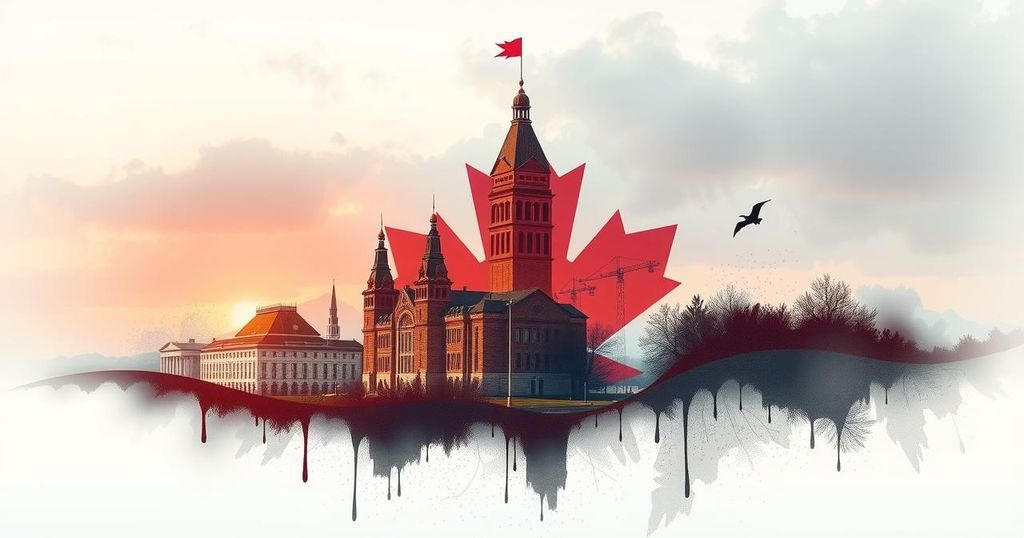The recent tariff threats from U.S. President Donald Trump pose serious challenges for Canada, forcing it to reassess its economic strategies between growth and climate policies. Diplomatic efforts are crucial in negotiating trade-related issues, while Canada must also consider its future direction in the global economy. The upcoming federal election will likely highlight these crucial economic debates, shaping the nation’s path forward.
The recent developments surrounding U.S. President Donald Trump’s tariffs have significant implications for Canada. As tariffs threaten a 25% levy on Canadian goods, it becomes critical for Canada to weigh its economic strategies carefully. Despite temporary tariff delays, the geopolitical landscape is shifting, placing Canada at a crossroads between economic growth and potential climate policy conflicts. Trump’s strategy aims to bolster American manufacturing and reduce trade deficits, which could redraw global trade dynamics and push Canada to reconsider its trade policies.
In light of increasing nationalism within the U.S., Canada must navigate these challenges with diplomatic solutions that address trade and security issues. Strategic negotiations will be necessary to alleviate existing tariffs and trade disputes, such as the ongoing softwood lumber conflict and the implications of the Inflation Reduction Act. Canada should focus on enhancing its economic model, reducing interprovincial trade barriers, and exploring broader trade agreements.
Canada’s economy faces a dual challenge of fostering growth through resource development versus implementing stringent climate policies that may hinder future prospects. Conservative Leader Pierre Poilievre advocates for resource expansion, while Liberal leadership candidate Mark Carney pushes for deeper climate initiatives. With the nation’s productivity stagnant compared to the U.S., the upcoming federal election will likely revolve around addressing these economic strategies and defining Canada’s position in a changing global landscape.
The backdrop to Canada’s current economic conversation is rooted in the fallout from the U.S. administration’s protectionist measures, particularly the tariff threats imposed by President Trump against allies, including Canada. These tariffs have sparked debates about economic growth versus stringent climate policies, with the U.S. economy characterized by a robust GDP performance compared to Canada and other western nations. The evolving U.S. trade stance necessitates a reevaluation of Canada’s economic strategies, particularly as relations with the U.S. become increasingly complex.
In conclusion, Canada stands at a pivotal moment regarding its economic policies amidst rising U.S. tariffs and changing global trade dynamics. The nation must prioritize diplomatic engagement to address trade challenges effectively while considering its economic growth strategies. With a focus on either resource development or climate policies, the next federal election will serve as a critical juncture to define Canada’s economic future in response to international pressures.
Original Source: nationalpost.com






